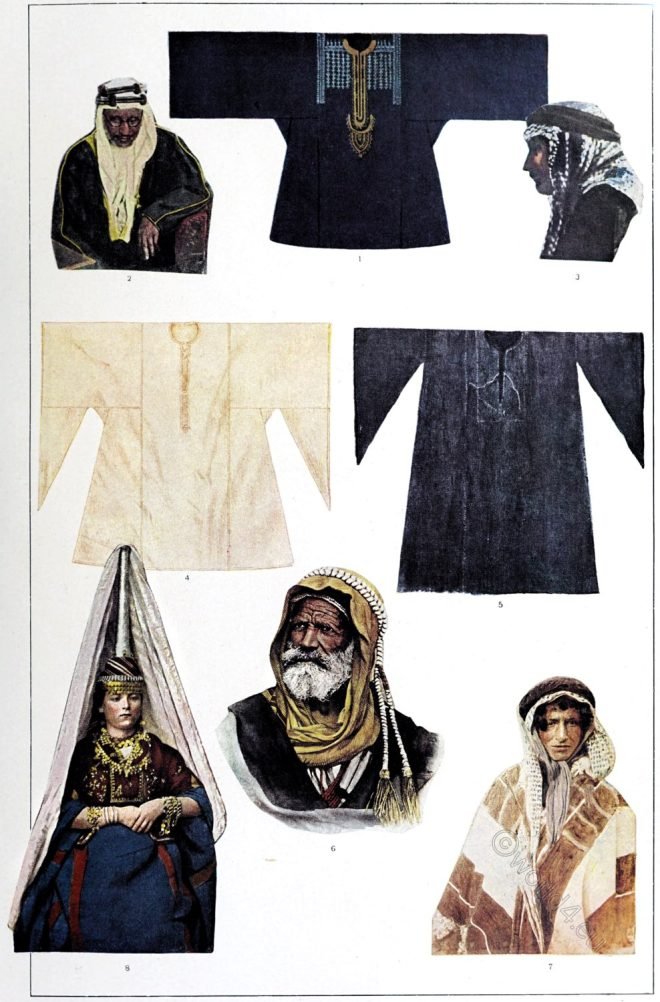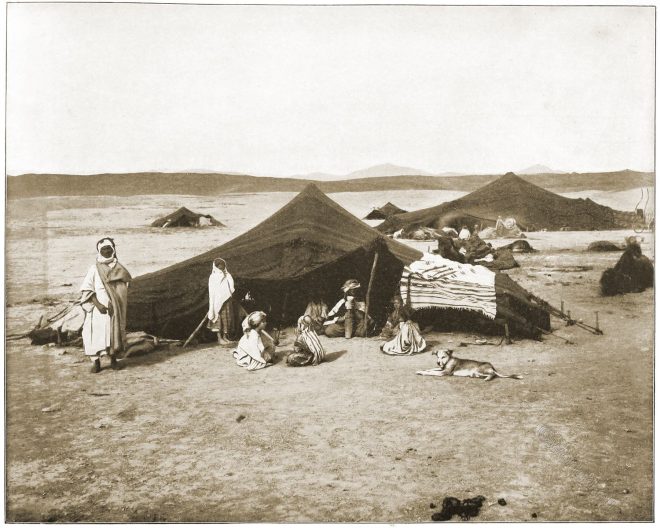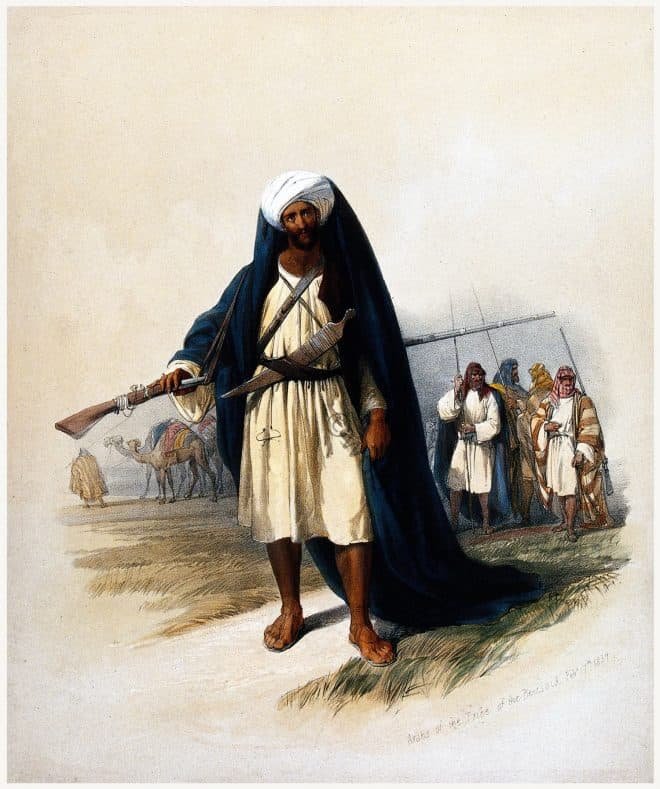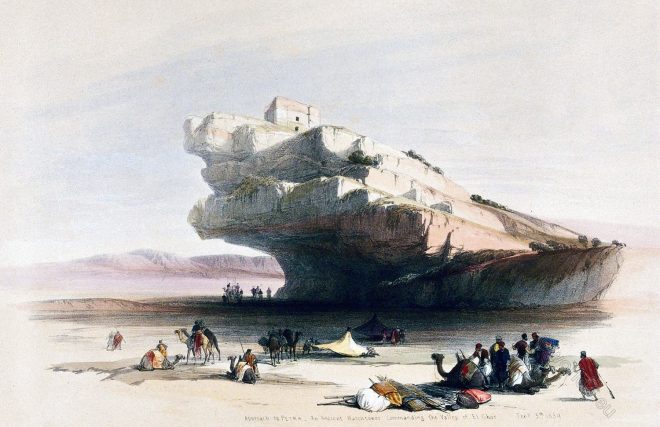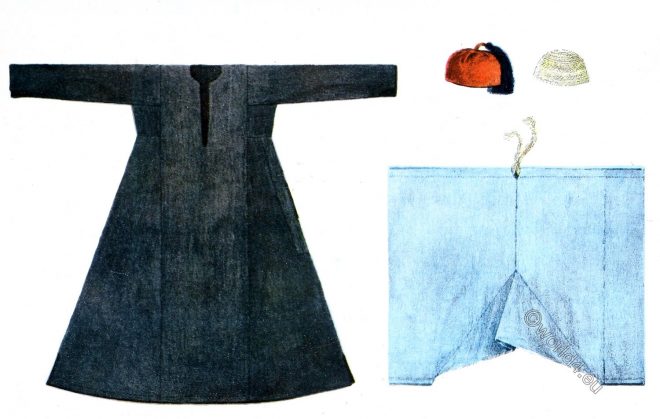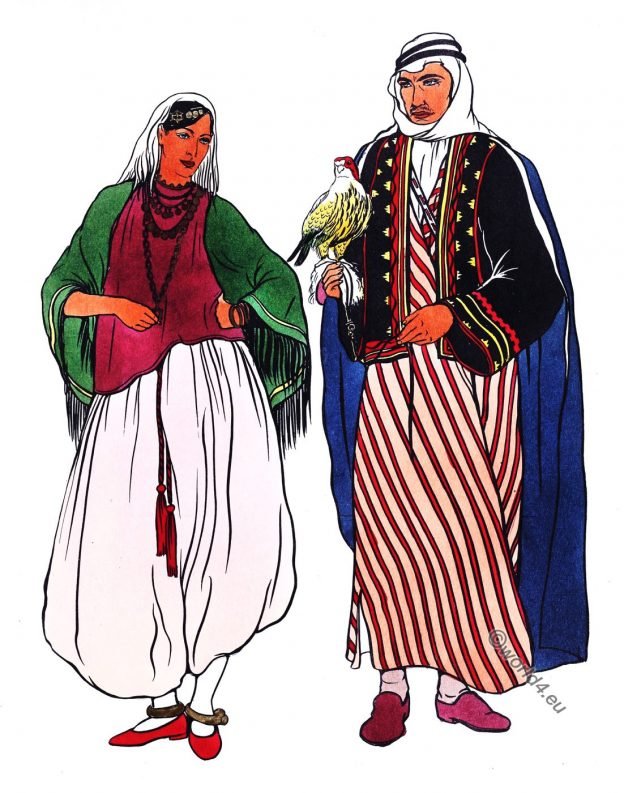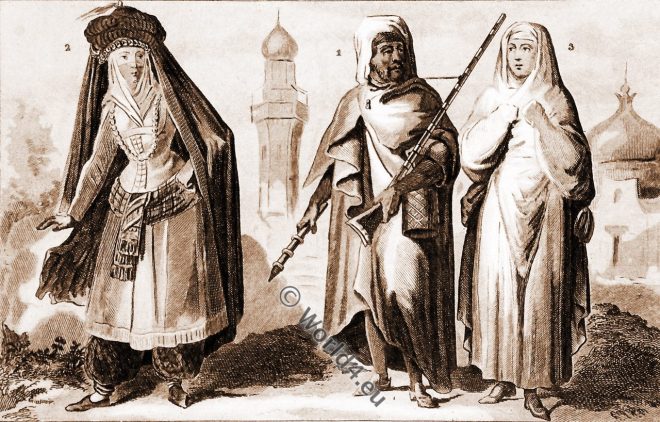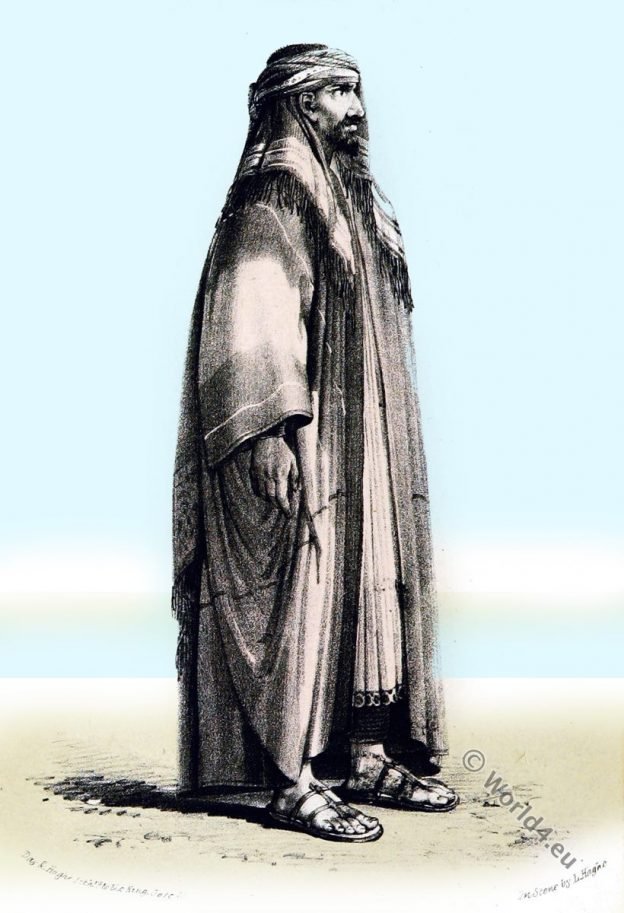Costume cuts and robe shapes from Arabia, Palestine and Syria.
Category: Arabia
Camp of A Caravan on the Sahara Desert
Caravans glide over its surface like gigantic fleets. The beautiful, mysterious oasis. A veritable ocean the mighty desert is. It has the same succession of limitless horizons, the same dreary monotony.
The colorful and picturesque dress of Arabia. Arabian dancing girl.
Of the two figures pictured here, the man might still, today, be seen walking the streets of Mecca. The woman, however, is a sort of dancing girl
Besharah, of the Beni Said tribe. The dress of the Arab tribes.
The dress of the Arab tribes on the route to Petra.
Besharah, of the Beni Said tribe, a member of the artists’ travelling party in Egypt, Sinai and Akabah.
Petra. An Ancient Watch Tower commanding the valley of El Chor.
Ancient rock-cut watch-tower overlooking the valleys of El Ghor and Akabah. February 5th, 1839.
Egyptian Man’s shirt. The Gallebaya. Characteristic garment.
Characteristic garment of the modern Egyptian population. A variation of the Gallebaya called “kamis”. The material is black cotton (Winter).
The dress of the Arabs. Affluent class. Pictorial work.
The name Arab originally was reserved for the nomad tribes east of Palestine and in the Syro-Arabian desert, but today it is generally used for most of the surviving Semitic peoples who, in addition to living in Arabia, are to be found in Mesopotamia, North Africa, the western shores of the Red Sea, and the eastern shores of the Persian Gulf.
Arabian inhabitants of Mecca and Medina, 19th century
Arabian inhabitants of Mecca and Medina in traditional clothing of the 19th century. Vêtements traditionnels. Arabe de Médine, femme de la Mecque et femme de Médine
King of Saudi Arabia. Sheikh Abdallah I. Ibn Saud.
Sheikh Abdallah I. ibn Saud (1740-1818) from the House of Saud, ruled the First Saudi State and was Imam of the Wahhabi
Abyssinian and Egyptians.
Abyssinian and Egyptians. Abyssin et Égyptiens. Guerriers et soldats du désert.

